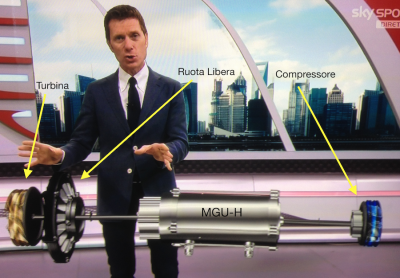ringo wrote:To compound that as well, you have to consider these clutches that are being used. Their reaction time will defeat the purpose as well. The PU is a very dynamic behaving thing.
What if the clutch is a passive device, say an overrun clutch? I don't think there would be much reaction time issue then?
Imagine the system not as a turbocharger with electrical add-ons, but as an electrically powered supercharger with gas turbine assistance. If the turbine is connected to the MGUH with an overrun clutch then if it is not spinning as quickly as the compressor it is disconnected and makes no contribution. When it does spin up to the speed of the supercharger it connects and reduces the electrical energy required to drive the compressor.
In such a scheme I would imagine the control of the compressor to be entirely on the electrical side.
I can foresee an issue when there is no electrical power to drive the supercharger, such as when leaving the pits. There might be substantial turbo lag at the end of the pit lane, but I guess a racing driver could compensate for that.
What do you think?
Fortune favours the prepared; she has no favourites and takes no sides.
Truth is confirmed by inspection and delay; falsehood by haste and uncertainty : Tacitus



